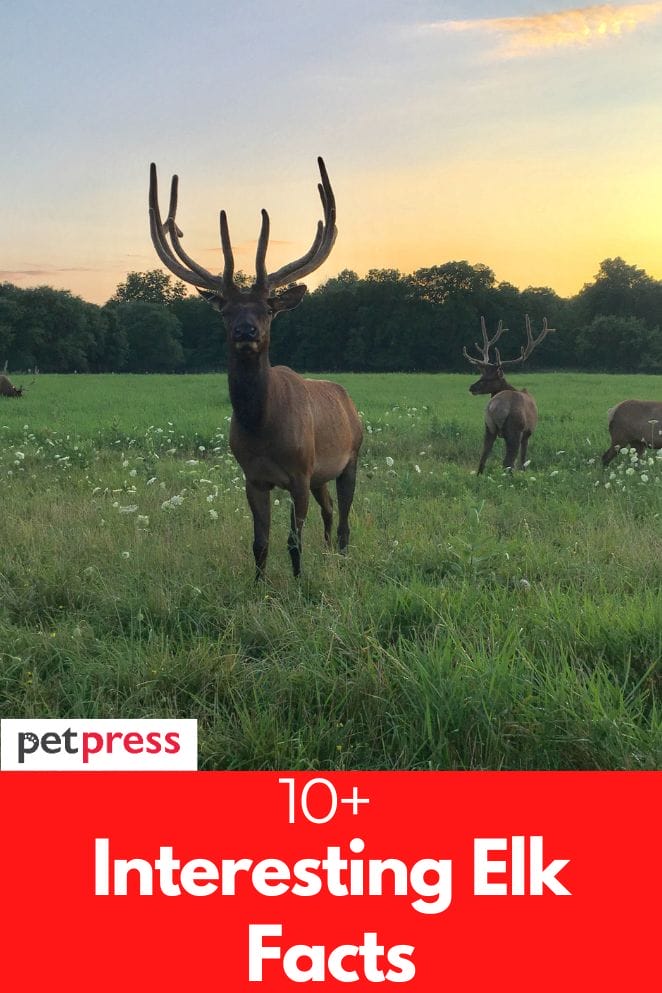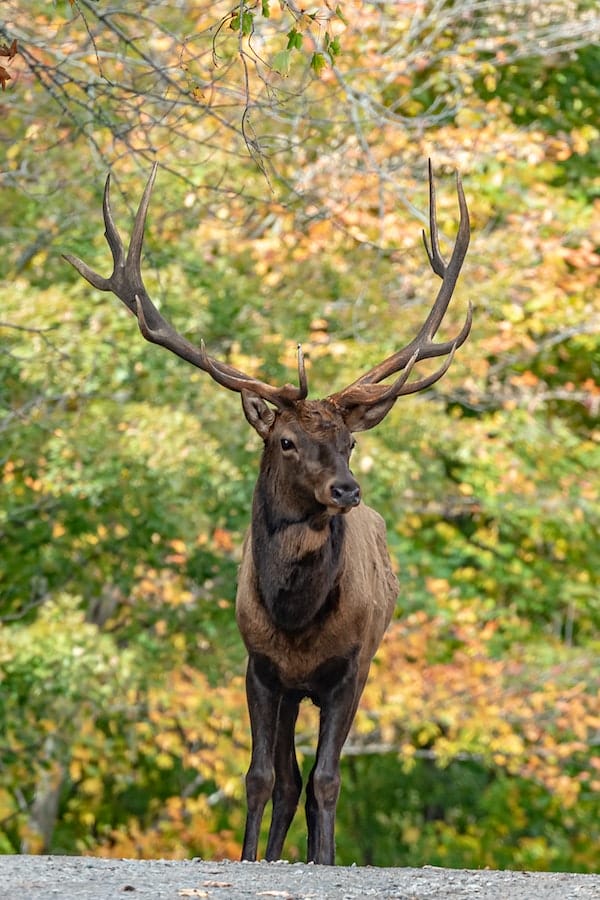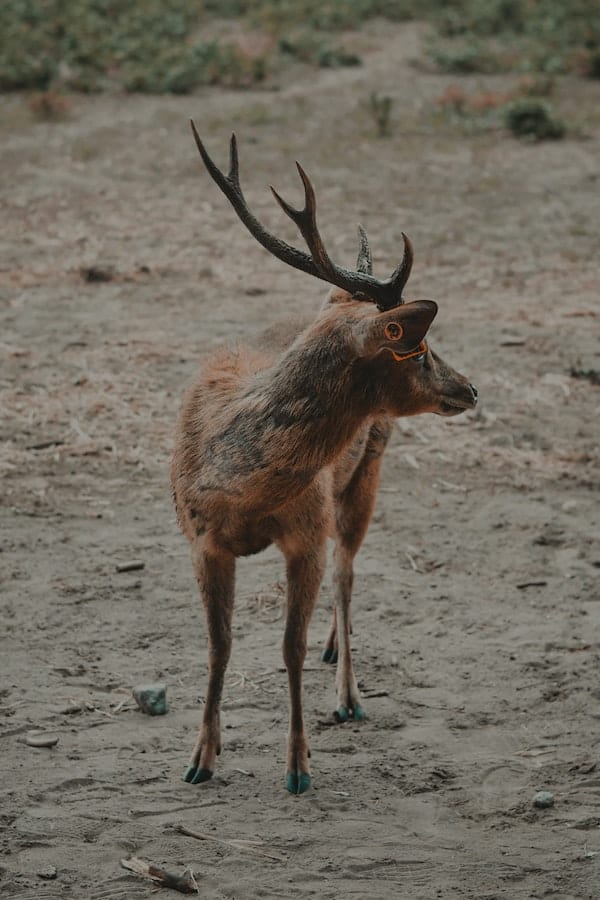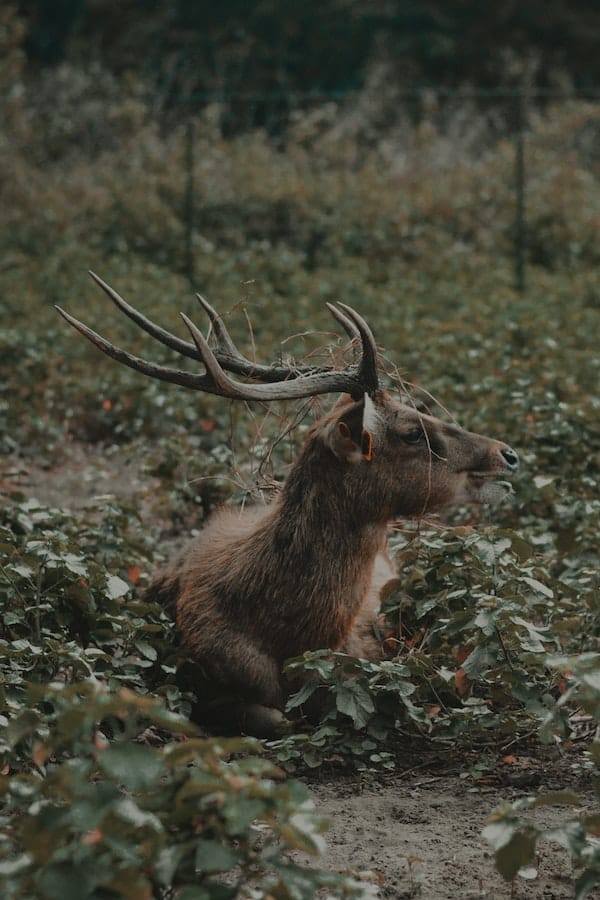
Elk are one of the largest members of the deer family and can be found in North America, Europe, and Asia.
They are powerful creatures with impressive antlers and have been an important food source for many cultures throughout history.
In addition to their place in our diets, elk also have some interesting facts about them that make them a fascinating species.
In this article, we’ll explore some of the most interesting elk facts, from their physical anatomy to their habits in the wild.
Read on to learn more about these majestic animals!
Fact #1: Elk have impressive antlers
Elk are known for their impressive antlers, measuring up to four feet long.
Male elk, also known as bulls, begin growing antlers in the spring every year and shed them again in the winter.
The antlers are covered in a soft velvet-like material that is filled with blood vessels and nerves.
Antlers are used for defenses and as a way of asserting dominance over other elk.
Aside from their impressive size, elk antlers also have an interesting structure—they have many points that branch off like the branches on a tree.
This helps them keep their balance running through the forest at top speeds!
Fact #2: Elk can run up to 35 miles per hour
Elk are incredibly fast and agile creatures, reaching speeds of up to 35 miles per hour!
In addition to running at top speeds, elk are also very strong swimmers, able to cross deep rivers and lakes with ease.
Their impressive muscles and powerful legs make them a force to be reckoned with in the wild.
Elk use their speed to defend against predators such as wolves, cougars, and bears; they can easily outrun any potential danger.
They are also known for their agility when maneuvering through dense forests, making them a difficult target for predators to catch.
Fact #3: Elk are social animals

Elk are incredibly social creatures and form large herds in the wild.
During the summer months, bulls can lead groups of up to 20 females and their young. These herds protect from predators as well as companionship.
In addition to forming large herds, elk also engage in social behaviors such as grooming and playing together.
They are known for being very vocal animals, communicating with each other through various sounds and calls.
Fact #4: Elk have keen senses
Elk have several impressive senses that help them survive in the wild.
Their eyesight is particularly sharp, allowing them to spot predators from great distances.
They also have an excellent sense of smell and can pick up scents from far away.
In addition, their hearing is extremely sensitive and they have a wide range of calls that they use to communicate with each other.
All these senses combined make elk a formidable force in the wild and help them stay one step ahead of predators.
Fact #5: Elk are browsers, not grazers
Elk are browsers, not grazers—meaning they mainly feed on leaves and other foliage rather than grass.
They feed primarily on shrubs and trees such as willow, birch, alder, and maple.
In addition to these plants, elk also eat various types of fruits, such as apples and berries.
While they do occasionally graze on grass, they mainly rely on shrubs and tree foliage for nourishment.
This difference in the diet helps them to avoid competition with other grazing animals like sheep and deer.
Fact #6: Elk are found in North America
Elk can be found throughout much of North America, from Alaska down to the Rocky Mountains.
In addition to their native range, elk have been successfully introduced into various parts of Europe and Asia.
While they prefer living in forests and meadows, elk have adapted to living in more urban areas.
They can be seen throughout many parks and even in some residential neighborhoods.
- Related post: A Complete Nam Ideas For an Elk
- Related post: Top 10+ Interesting Moose Facts
Fact #7: Elk are an important game species

Elk are a popular game species, prized for their large antlers and delicious meat.
Hunting is a major source of recreation in many areas of North America, as well as providing income for local communities through the sale of hunting licenses.
Elk meat is also highly sought after, as it is lean and very flavorful.
In addition to hunting, elk are also farmed for their antlers which are used in traditional medicines and as decorations.
All these factors make elk an important species in both the wild and domestic settings.
Fact #8: Elk can live up to 10 years in the wild
Elk have an average lifespan of about ten years in the wild.
They reach maturity at around three or four years old and can breed for the remainder of their lives.
During this time, they will typically produce one or two calves each year. In captivity, elk can live up to twenty years if properly cared for.
This long life span ensures that the species will continue to thrive in its natural environment for many generations.
Fact #9: Elk have few natural predators
Elk are large and powerful animals, which means they have few natural predators.
In North America, their main enemies are wolves and bears. Occasionally mountain lions will take down an elk as well.
In other parts of the world, lynxes and wild cats have also been known to target them.
Despite their size, elk are still vulnerable and must be constantly vigilant against these predators.
By avoiding open areas and staying in groups, elk can successfully reduce their chances of becoming prey.
Fact #10: Elk numbers are increasing
Elk populations have been steadily increasing in recent decades due to a combination of habitat protection and successful reintroduction programs.
They are now found across much of North America and parts of Europe and Asia.
This has allowed the species to increase its range, as well as allow hunters access to larger herds.
With proper management, it is likely that elk populations will continue to grow in the years to come.
In addition to their environmental benefits, elk are an important game species for hunters and conservationists worldwide.
Fact #11: Elk are an iconic species

Elk are an iconic species found in many of North America’s best-known national parks and wildlife reserves.
They flourish in forests, meadows, and valleys throughout the continent, developing a deep connection to the land that has been maintained for centuries.
In addition to their ecological importance, elk are also seen as a symbol of strength and resilience.
As an important game species, they provide recreation and sustenance to many local communities throughout North America.
All these factors have made elk an iconic species that is beloved by many people around the world.
Fact #12: Elk are herd animals
Elk are social creatures that live in large herds. During the summer months, these herds can reach hundreds of individuals and include both adult males and females.
They also form smaller groups during other times of the year, such as winter or breeding season.
The size of these herds provides elk with a great degree of safety as they can quickly spot potential predators.
Herds also travel together to find food, water, and shelter more efficiently, ensuring the species’ survival in their respective habitats.
Overall, elk are an iconic species with a long and proud history in North America.
They have been hunted for centuries by indigenous people, providing both food and other resources.
Today they are found across the continent, and their populations are increasing due to successful management practices.
Elk also have few natural predators, allowing them to flourish in many different habitats.
All these factors have made elk an iconic species that is beloved by many people around the world.


GIPHY App Key not set. Please check settings